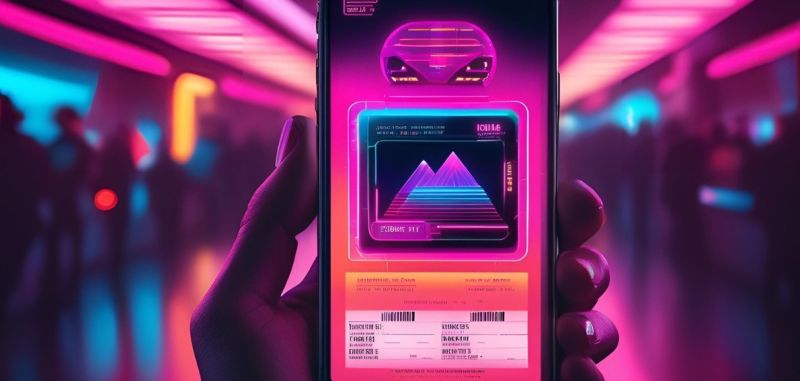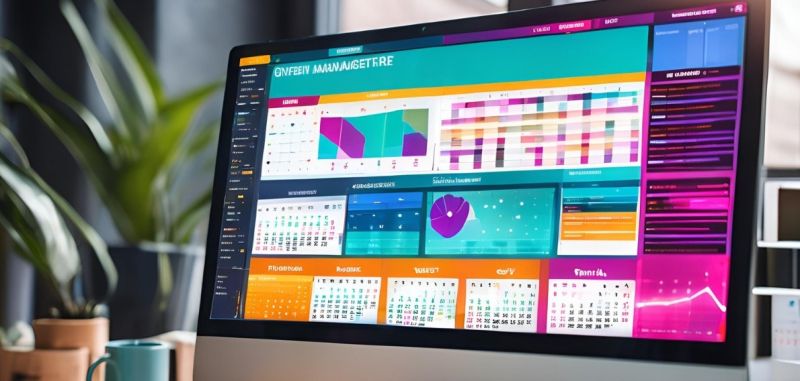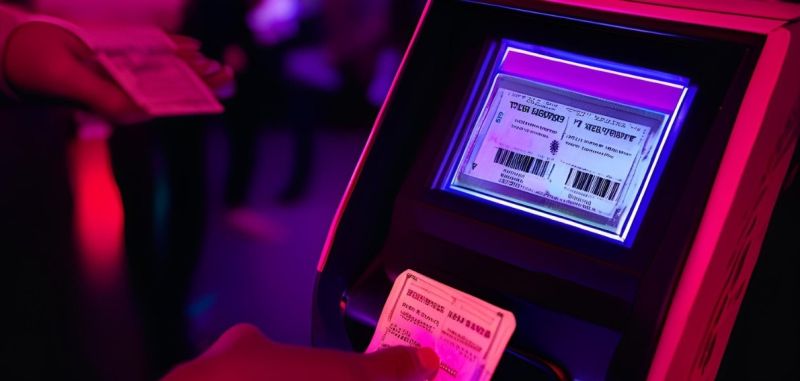Event entry is often the first interaction attendees have with your event, and it’s critical that it sets a positive tone for the rest of the experience.
Managing various aspects of event logistics is crucial for a smooth entry process. Effective event engagement starts with a seamless entry experience. Long lines, confusion, or slow check-ins can create frustration and set the wrong impression before your guests even step through the door.
In 2025, efficient and streamlined entry management is more important than ever, thanks to new technologies and growing expectations from attendees.
To ensure your guests have a smooth, stress-free entry experience, here are five essential tips for seamless event entry management.
1. Leverage Digital and Mobile Ticketing

Gone are the days when paper tickets were the norm. In 2025, digital and mobile ticketing has become the go-to solution for event entry, simplifying event registration and offering both convenience and security.
- QR Code and Barcode Scanning: Digital tickets with QR codes or barcodes can be easily scanned at entry points. This minimizes manual entry errors and speeds up the check-in process. Plus, it reduces the risk of counterfeit tickets.
- Mobile Ticketing: Encourage attendees to download their tickets directly to their smartphones, enabling a more eco-friendly and convenient entry process. They can simply show their ticket on their phone screen, avoiding the need to search through paper tickets or email inboxes.
- Instant Access: Digital ticketing platforms also allow attendees to instantly receive their tickets after purchase. This eliminates the risk of lost or forgotten tickets and ensures everyone is ready for a quick entry.
A mobile event app is crucial for managing attendee engagement and streamlining the check-in process, enhancing the overall event experience.
Also Read: Technology Against Ticket Scalping: 2025 Trends and Tips
Tip for Organizers: Integrate a mobile ticketing solution with your event app, enabling attendees to easily access their tickets, track event updates, and receive real-time information about entry procedures.
Pro Tip: For optimal event entry management, Ticket Fairy offers end-to-end solutions that allow organizers and their team to manage event entry, ticket sale windows and gate timings all from a mobile-friendly platform. The platform also offers an intelligent app for ticket scanning at the gate that can be hosted across numerous devices during an event allowing for gate/door staff to scan, manage and coordinate ticket scanning in real-time.
2. Choosing the Right Event Management Software

Choosing the right event management software is a critical decision for event planners. With so many options available, it can be overwhelming to determine which software is best suited to your needs. Here are some key factors to consider when selecting event management software:
- Ease of Use: The software should be user-friendly and intuitive, even for those who are not tech-savvy. A simple interface can save time and reduce the learning curve for your team.
- Features: Consider the features that are essential to your event, such as registration, ticketing, and attendee tracking. Look for an event management platform that offers all the features you need to manage your event efficiently.
- Integration: Ensure that the software integrates with other tools and systems that you use, such as email marketing software and CRM systems. This can streamline your workflow and improve data management.
- Scalability: Choose software that can grow with your event, whether it’s a small conference or a large festival. Scalability ensures that the software can handle increased attendees and additional features as your event expands.
- Customer Support: Look for software that offers excellent customer support, including training and technical assistance. Reliable support can help you troubleshoot issues quickly and keep your event running smoothly.
By considering these factors, event planners can choose the right event management software to help them plan and execute successful events.
Also Read: Top Event Ticketing Platforms: Which One’s Best for Your Events
3. Use Multiple Entry Points for Crowd Flow

Whether you’re hosting a large convention or a smaller event, limiting access to a single entry point can lead to frustrating bottlenecks, especially during peak arrival times. To avoid long lines and congestion, strategic event planning involves creating multiple entry points for a smoother flow of attendees.
- Strategic Placement: If possible, open multiple gates or entrances, clearly marked and equipped with dedicated staff or technology for fast check-in. This prevents overcrowding and shortens wait times, improving the overall attendee experience.
- VIP and General Entry Lines: Separate queues for VIPs, exhibitors, and general attendees can help prevent delays and confusion. Ensure these lanes are clearly marked with signage, and staff are trained to manage them efficiently. Event organizers play a crucial role in managing these entry points and ensuring a smooth flow of attendees.
- Flexible Check-In Areas: Designate areas for quick entry, such as self-check-in kiosks or separate counters for will-call tickets. These should be spaced out throughout the venue to distribute attendees more evenly.
Tip for Organizers: Use a venue map to plan out entry points in advance and ensure traffic flows smoothly. Also, prepare for high-volume periods by having extra staff available to manage multiple entry points.
4. Utilize RFID and NFC Technology

Radio Frequency Identification (RFID) and Near Field Communication (NFC) technologies are integral parts of modern event management solutions, offering highly efficient, contactless solutions for event entry, speeding up the check-in process and reducing human error.
- RFID Wristbands or Badges: RFID-enabled wristbands or badges can store attendee data and be scanned quickly at entry points. These can be used not only for entry but also for cashless payments, access control, and even tracking attendee movement during the event.
- NFC for Contactless Entry: Similar to RFID, NFC allows attendees to tap their smartphones or NFC-enabled cards to gain access. It’s a quick and seamless way to authenticate attendees without needing physical tickets or tickets to be scanned by staff.
- Data Collection and Analytics: Both RFID and NFC provide valuable data that can help you better understand attendee behavior. You can track entry times, patterns, and bottlenecks to optimize future events.
These technologies can also be used to track event attendance and gather valuable data on attendee participation, helping organizers monitor real-time attendee participation and session popularity.
Tip for Organizers: Use RFID or NFC solutions to streamline entry, offer more personalized experiences, and gather data on attendee preferences and movements within the venue. Ensure your staff is trained to handle these technologies efficiently.
Also Read: RFID Technology For Event Ticketing In 2025: The Complete Guide
5. Efficient Event Entry with QR Check-in Systems

QR check-in systems are a game-changer for event entry management. These systems use Quick Response (QR) codes to check attendees into events efficiently and effectively. Here are some benefits of using QR check-in systems:
- Speed: QR check-in systems can process attendees quickly and efficiently, reducing wait times and improving the overall event experience. Attendees simply scan their QR code at the entry point, allowing for rapid check-in.
- Accuracy: QR codes can be used to track attendee information, ensuring that the correct information is captured and reducing errors. This accuracy is crucial for maintaining up-to-date event data and attendee records.
- Convenience: QR check-in systems can be used on a variety of devices, including smartphones and tablets, making it easy for attendees to check in. This flexibility allows for a more streamlined and user-friendly entry process.
- Security: QR codes can be used to provide an additional layer of security, ensuring that only authorized attendees can access the event. This helps prevent unauthorized entry and enhances overall event security.
By implementing QR check-in systems, event planners can create a seamless and efficient event entry process that enhances the overall event experience.
6. Clear Signage and Communication

To ensure a smooth entry experience, communication and signage are key. Utilizing event management tools can help in planning and executing clear signage and communication strategies. Confused attendees can lead to congestion, frustration, and delays. Make sure your event entry area is well-marked and well-staffed, with clear instructions for guests.
- Visible Signage: Place large, easy-to-read signs at key locations (entrances, ticket booths, will-call areas, etc.). Include arrows, maps, and text that clearly indicate where attendees need to go for check-in or ticket validation.
- Digital Displays and Announcements: Use digital screens or loudspeakers to provide real-time updates and instructions, such as entry hours, important announcements, or wait times. This helps prevent confusion and keeps attendees informed. An event tech platform can be instrumental in providing these real-time updates and instructions to attendees.
- Pre-Event Information: Provide clear, concise instructions via email, your event app, or your website. Include parking details, directions to the venue, and specific information about the entry process (e.g., where to go for ticket scanning, what ID to bring, etc.).
Tip for Organizers: Use a combination of digital and physical signage. Ensure that all your signage is accessible and available in multiple languages if necessary to cater to diverse audiences.
Also Read: Music Event Floor Plan Guide: Creating the Perfect Layout
7. Well-Trained Staff and Volunteers

No amount of technology will make up for poor service at the entry point. Utilizing event planning software can assist in training and managing your staff and volunteers, ensuring a smooth, efficient entry process. Your staff and volunteers play a critical role in creating a positive first impression.
- Training: Ensure that your staff is trained on ticketing systems, the layout of the venue, and emergency procedures. They should also be briefed on how to handle large crowds, manage queues, and troubleshoot any tech-related issues that may arise.
- Friendly and Efficient Service: Your team should prioritize customer service, providing helpful assistance to attendees without delaying the process. They should be friendly, patient, and knowledgeable about the event.
- Flow Management: Have designated staff positioned at entry points to guide attendees to the correct lines, check tickets, and ensure the entry process runs smoothly. You may also want to assign extra staff to peak times to keep everything running efficiently.
Tip for Organizers: In addition to providing training, make sure your staff and volunteers are easily identifiable with branded clothing, badges, or wristbands so attendees know where to go for help.
Conclusion
Seamless event entry is an essential component of a successful in-person event. When attendees are able to get through the doors quickly and efficiently, they are more likely to have a positive experience overall. By leveraging technology like mobile ticketing, RFID/NFC systems, and clear communication, alongside well-trained staff and strategic entry points, you can ensure that the entry process is smooth and stress-free.
Effective management tools play a crucial role in ensuring a smooth and efficient entry process. These tools streamline scheduling, budgeting, and attendee engagement, enhancing collaboration and overall event success.
Remember, the entry experience sets the tone for the rest of the event, so investing in these strategies will not only reduce delays but also leave a lasting impression on your attendees, making them excited to return in the future.
For a complete guide to onground event management, read: Onground Music Event Management Guide: Ensuring Your Event Runs Smoothly
Frequently Asked Questions
What are the key benefits of switching to digital and mobile ticketing for event entry management?
Digital and mobile ticketing revolutionizes event entry by offering multiple advantages over traditional paper tickets. The system enables quick QR code and barcode scanning, significantly reducing check-in times and eliminating manual entry errors.
Attendees can conveniently store tickets on their smartphones, making the process more eco-friendly and ensuring they never forget or lose their tickets. The instant delivery of digital tickets after purchase enhances security by preventing counterfeit tickets and provides real-time access to event information.
When integrated with a mobile event app, digital ticketing creates a seamless experience where attendees can access their tickets, receive updates, and track event information all in one place. This modern approach not only streamlines the entry process but also provides valuable data insights for event organizers.
How can event organizers effectively manage crowd flow using multiple entry points?
Managing crowd flow through multiple entry points is crucial for preventing bottlenecks and ensuring a smooth event experience. Strategic placement of entrance gates is essential, with each point equipped with dedicated staff and appropriate technology for efficient check-in.
Implementing separate queues for different attendee types (VIP, exhibitors, general admission) helps organize traffic flow and reduce wait times. Self-check-in kiosks and will-call counters should be distributed throughout the venue to prevent congestion in any single area.
Event organizers should utilize venue maps during the planning phase to optimize entry point locations and prepare for high-volume periods by having additional staff ready to manage multiple entrances. This systematic approach to crowd management significantly improves the overall attendee experience and reduces entry-related frustrations.
What role does RFID and NFC technology play in modern event entry management?
RFID and NFC technologies have transformed event entry management by providing sophisticated, contactless solutions for attendee access. These technologies enable quick authentication through RFID-enabled wristbands or badges, which can store comprehensive attendee data and facilitate multiple functions beyond entry, including cashless payments and access control.
NFC capabilities allow attendees to simply tap their smartphones for instant access, creating a seamless and efficient entry process. One of the most valuable aspects of these technologies is their ability to collect real-time data on attendee behavior, entry patterns, and movement throughout the venue. This information helps organizers optimize event flow, identify potential bottlenecks, and make data-driven decisions for future events, ultimately enhancing the overall event experience.
What should organizers consider when selecting event management software?
Choosing the right event management software requires careful consideration of several key factors. The platform should offer an intuitive, user-friendly interface that minimizes the learning curve for staff while providing essential features like registration, ticketing, and attendee tracking.
Integration capabilities with existing tools such as CRM systems and email marketing software are crucial for maintaining seamless operations. The software should be scalable to accommodate events of varying sizes and complexity, ensuring it can grow alongside your event needs.
Reliable customer support, including comprehensive training and technical assistance, is essential for troubleshooting and maintaining smooth operations. When evaluating options, organizers should prioritize solutions that offer robust analytics, mobile accessibility, and real-time reporting features to enhance decision-making capabilities.
How important is staff training for ensuring smooth event entry management?
Well-trained staff and volunteers are fundamental to creating a positive first impression and maintaining efficient event entry flow. Comprehensive training should cover all aspects of the ticketing systems, venue layout, and emergency procedures, ensuring staff can confidently handle various situations.
Team members must balance friendly customer service with efficient processing times, maintaining a welcoming atmosphere while keeping lines moving. Staff should be strategically positioned at entry points to guide attendees, manage queues, and resolve any issues quickly.
Having easily identifiable staff through branded clothing or badges helps attendees quickly locate assistance when needed. Additional staff should be scheduled during peak times to maintain smooth operations. Proper training and preparation of event staff directly impacts attendee satisfaction and overall event success.
You May Also Like:
OnGround Event Technology For Music Concerts to Know About in 2025
SEO Tips for Event Organizers: The Ultimate Guide to Boost Your Event’s Online Visibility in 2025



 19th May 2025
19th May 2025